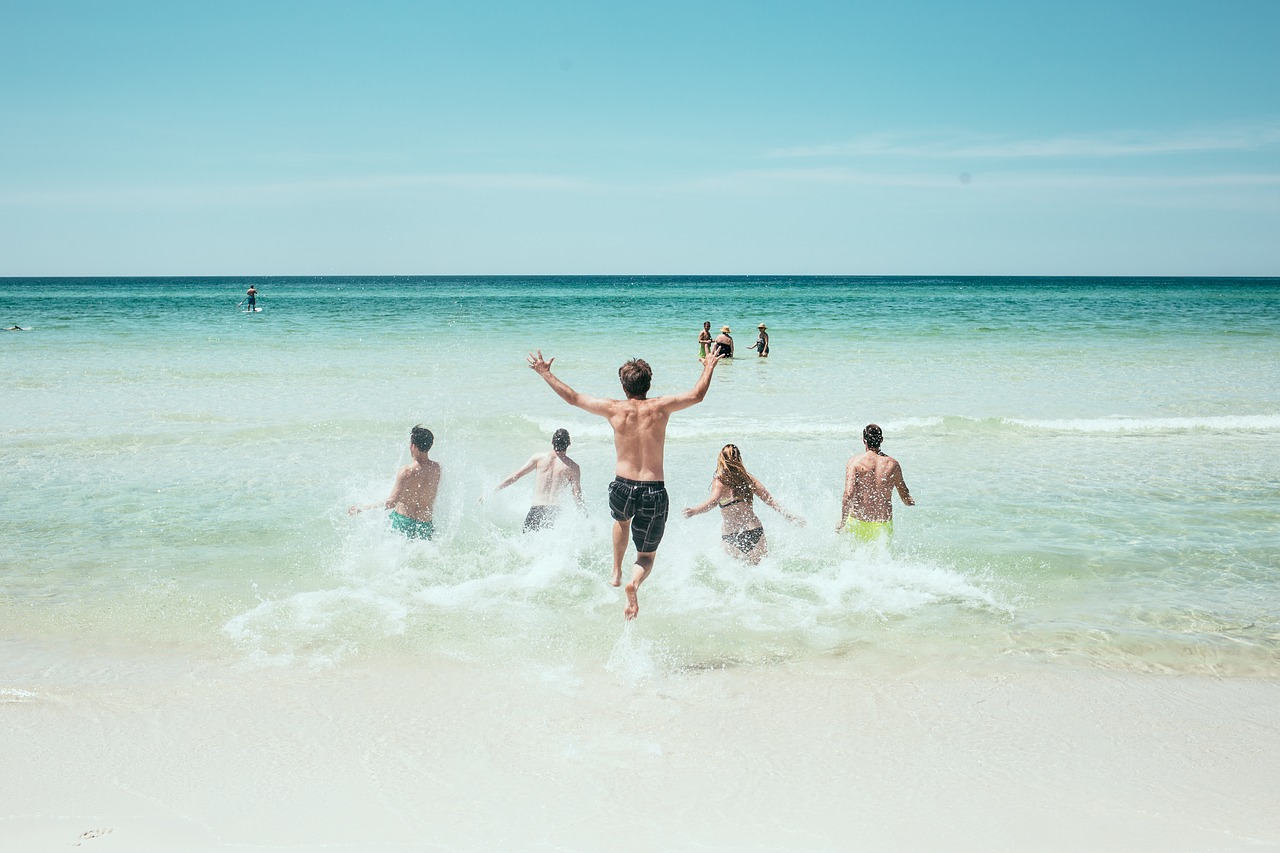Safe Fun in the Sun

“She had her drink in her hand. She had her toes in the sand…” (Van Halen, Beautiful Girls). Yes, the beach beckons and you’re answering the call this summer. However, unlike those care-free boys (Beautiful Girls was released in 1979) from Van Halen, you’re older now and, as a result, you’ve become more safety conscious. And there’s absolutely nothing wrong with that.
 Because you have become older and wiser in the 40 years since “Diamond” David Lee Roth crooned about those beautiful girls, here are some tips on how to have fun in the sun while staying safe at the same time…
Because you have become older and wiser in the 40 years since “Diamond” David Lee Roth crooned about those beautiful girls, here are some tips on how to have fun in the sun while staying safe at the same time…
- Guards matter.Lifeguards, that is. They are there for one reason; your safety. That being the case, never swim at a beach where none are present, ever. Better yet, set up your beach camp near a lifeguard station and swim in close proximity to it.
- Know what the flags mean.When you do set up shop near the lifeguard station, you’ll probably notice that there is a flag flying from it. That flag represents surf conditions for the day and you should know what they mean. Generally speaking, the colors are similar to a stop light. A red flag represents strong surf or rip tides are present. Yellow means a moderate surf, while green means conditions are good. A blue or purple flag means there is dangerous marine life present, such as jellyfish or worse, sharks.
- Beware the breakers.Or waves, as they’re more commonly called. Be especially aware of large shore breakers, or waves that break close to shore, where many beachgoers spend most of their time, as opposed to those breakers from the awesome Tom Hanks movie, Castaway, where the waves broke far from shore. Not only can waves knock you down, they can then roll you along dangerous rocks, sand, and reefs. A good rule of thumb? Never turn your back to the waves.
- The ocean is not a pool or lake. The ocean is so much more complicated than a calm lake or pool. It has dangerous currents, breakers, rip tides, reefs, rocks, creatures, and its vast scale can be overwhelming or confusing. Those currents can pull you offshore or down the beach, so be sure to have a reference point you can use to return to your point of origin. Be sure that everyone in your group understands this fact, especially weak swimmers, first time beachgoers and children. Also, no matter their swimming skills, be sure they never enter the water alone. Always use the buddy system.
- Beware the sun.Not only should a high SPF sun block be used at all times, but you should also have access to shade as well. Remember, too much exposure to sun and high heat indexes can cause dehydration, heat exhaustion, and heat stroke. Drink plenty of cool, non-alcoholic, non-caffeinated drinks as well.
- Protect your feet.Not only against hot sand, but also what lies beneath. Remember, some people leave their trash behind, including sharp objects. Also, crustaceans (crabs, clams, etc.) have sharp shells, alive or dead. If you go for a walk along the beach, it’s always a good idea to wear flip flops or water shoes.
Yes, high on the priority list of any beach vacation is to have fun, but fun and safety are NOT mutually exclusive things. They go together like, well, Van Halen and beautiful girls.
You must be logged in to post a comment.